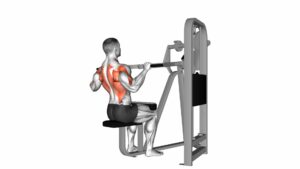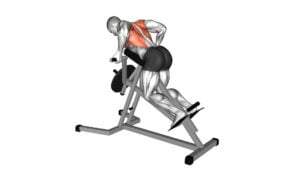Back Lever – Video Exercise Guide & Tips

Looking to master the back lever? You've come to the right place!
Watch This Exercise Video
In this video exercise guide, we'll show you the proper technique, essential warm-up exercises, and progression tips for beginners.
Plus, we'll share advanced variations and challenges to keep you pushing your limits.
Avoid common mistakes and get ready to strengthen your core and build impressive upper body strength.
Let's dive in and conquer the back lever together!
Key Takeaways
- Engage your core and maintain straight arms without bending the elbows.
- Keep your body parallel to the ground and avoid arching your back.
- Maintain a balanced position without leaning too far forward.
- Warm up properly and gradually progress through different stages of the back lever.
Proper Technique for the Back Lever
To perform the back lever correctly, engage your core, maintain straight arms, and keep your body parallel to the ground. The back lever is a challenging exercise that requires strength, flexibility, and body control. When attempting the back lever, there are some common mistakes to avoid and effective progressions to follow.
One common mistake isn't engaging your core. Your core muscles play a crucial role in stabilizing your body during the back lever. To avoid this mistake, focus on tightening your abs and pulling your belly button towards your spine throughout the movement.
Another mistake isn't maintaining straight arms. Your arms should be fully extended and locked out during the back lever. Avoid bending your elbows as this can compromise the effectiveness of the exercise.
To progress effectively in the back lever, start with easier variations such as tuck or advanced tuck back lever. As you build strength and control, gradually extend your legs and aim for a full back lever.
Essential Warm-up Exercises
Start your warm-up routine with three essential exercises to prepare your body for the back lever. Begin with pre-workout stretches to increase flexibility and prevent injury. Dynamic warm-up activities are also crucial to activate your muscles and improve blood flow.
First, perform shoulder stretches to loosen up the muscles in your upper body. Stand tall and interlace your fingers behind your back. Gently lift your arms upward as far as comfortable, feeling the stretch in your shoulders and chest. Hold for 10-15 seconds, then release. Repeat this stretch three times.
Next, incorporate dynamic warm-up activities such as arm circles. Stand with your feet shoulder-width apart, extend your arms out to the sides, and make small circles with your arms. Gradually increase the size of the circles, focusing on engaging your shoulder muscles. Do this for 30 seconds, then switch directions and repeat.
Finally, include hip rotations to warm up your lower body. Stand with your feet hip-width apart and place your hands on your hips. Rotate your hips in a circular motion, first clockwise and then counterclockwise. Perform 10 rotations in each direction, ensuring smooth and controlled movements.
Progression Tips for Beginners
As a beginner, you can further enhance your back lever progression by incorporating these helpful tips:
- Focus on form: Pay attention to your body positioning throughout the exercise. Maintaining proper form is crucial for building strength and preventing injuries.
- Start with beginner modifications: If you're finding it challenging to hold the full back lever position, start with modified versions. You can try tuck lever or advanced tuck lever to gradually build up your strength and flexibility.
- Work on core strength: Building a strong core is essential for performing the back lever. Incorporate exercises like planks, hollow holds, and leg raises into your training routine to strengthen your core muscles.
- Progress gradually: Rome wasn't built in a day, and neither will your back lever. Take your time to progress through the different stages, gradually increasing the difficulty as you get stronger and more comfortable with the exercise.
- Be consistent: Consistency is key when it comes to mastering the back lever. Practice regularly, and don't get discouraged if progress seems slow at first. With time and dedication, you'll improve your skills and achieve your goals.
Advanced Variations and Challenges
To further challenge yourself in the back lever exercise, you can explore advanced variations and face new challenges. By incorporating advanced progressions and implementing specific training strategies, you can continue to develop your strength and control in this challenging exercise.
One advanced variation you can try is the straddle back lever. This involves spreading your legs apart while maintaining the lever position. This variation increases the difficulty by requiring more strength in your core and shoulders.
Another advanced progression is the one-arm back lever. This variation requires exceptional upper body strength and stability. Start by training with one arm extended out to the side while maintaining the back lever position. As you progress, you can gradually increase the duration and control of this challenging variation.
To improve your performance in these advanced variations, focus on targeted training strategies. This includes incorporating exercises that specifically target the muscles used in the back lever, such as rows, pull-ups, and core exercises.
Common Mistakes to Avoid
To avoid hindering your progress in the back lever exercise, it's important to be mindful of common mistakes that can be made. Here are some common mistakes to avoid and tips on maintaining proper form:
- Arching your back: It's crucial to keep your back straight during the back lever. Avoid arching your back, as this can put unnecessary strain on your spine and decrease the effectiveness of the exercise. Focus on engaging your core and keeping your body in a straight line.
- Leaning too far forward: Leaning too far forward can make the back lever more difficult and increase the risk of injury. Aim to maintain a balanced position by keeping your body centered and your weight evenly distributed.
- Not engaging your shoulders: Proper shoulder engagement is key to executing the back lever correctly. Make sure to depress and retract your shoulder blades, and actively engage your lats and upper back muscles throughout the movement.
Frequently Asked Questions
How Long Does It Take to Master the Back Lever?
To master the back lever, it takes time and dedication. Progress in back lever varies for each person, but with consistent practice, you'll see improvements.
It's important to focus on proper form and avoid common mistakes such as sagging or arching your back. By keeping a strong core and engaging your muscles, you'll build the strength and stability needed for the back lever.
With patience and persistence, you can achieve mastery in this challenging exercise.
What Muscles Does the Back Lever Target?
The back lever is a challenging exercise that targets multiple muscle groups. It primarily works the muscles in your back, including the latissimus dorsi, rhomboids, and erector spinae.
Additionally, it engages your core muscles, such as the rectus abdominis and obliques, for stability and control. By progressing through various back lever exercises, you can strengthen and develop these muscles, improving your overall upper body strength and posture.
The back lever offers numerous benefits, including improved shoulder stability and increased pulling strength.
Can the Back Lever Be Harmful to the Spine?
The back lever can be harmful to the spine if not done correctly. It requires a strong core and upper body strength, so it may not be safe for beginners.
To progress in the back lever, start with easier variations like tuck lever or advanced tuck lever before attempting the full back lever.
Make sure to engage your core and keep your spine in a neutral position to minimize the risk of injury.
Are There Any Modifications for Individuals With Wrist Injuries?
If you have wrist injuries, there are modifications for the back lever exercise. Instead of putting weight on your wrists, you can use gymnastic rings or parallel bars to perform the exercise. This will help alleviate strain on your wrists.
Additionally, there are alternative exercises you can do to work on your back and core strength without putting stress on your wrists, such as planks, bridges, or supermans.
Consult with a fitness professional for guidance.
Can the Back Lever Be Performed on Any Type of Bar or Apparatus?
Yes, the back lever can be performed on different types of bars or apparatus. It's a versatile exercise that can be done on a pull-up bar, gymnastics rings, or even a sturdy tree branch.
The back lever is a challenging move that targets your upper body, especially your back, shoulders, and core muscles. It helps to build upper body strength, improve body control, and increase overall stability.
Conclusion
In conclusion, mastering the back lever requires proper technique, essential warm-up exercises, and progression tips for beginners.
As you advance, you can explore advanced variations and challenges to further strengthen your back lever skills.
However, it's important to avoid common mistakes that may hinder your progress.
By following these guidelines and practicing consistently, you can achieve success in performing the back lever exercise.

Author
Years ago, the spark of my life’s passion ignited in my mind the moment I stepped into the local gym for the first time. The inaugural bead of perspiration, the initial endeavor, the very first surge of endorphins, and a sense of pride that washed over me post-workout marked the beginning of my deep-seated interest in strength sports, fitness, and sports nutrition. This very curiosity blossomed rapidly into a profound fascination, propelling me to earn a Master’s degree in Physical Education from the Academy of Physical Education in Krakow, followed by a Sports Manager diploma from the Jagiellonian University. My journey of growth led me to gain more specialized qualifications, such as being a certified personal trainer with a focus on sports dietetics, a lifeguard, and an instructor for wellness and corrective gymnastics. Theoretical knowledge paired seamlessly with practical experience, reinforcing my belief that the transformation of individuals under my guidance was also a reflection of my personal growth. This belief holds true even today. Each day, I strive to push the boundaries and explore new realms. These realms gently elevate me to greater heights. The unique combination of passion for my field and the continuous quest for growth fuels my drive to break new ground.







